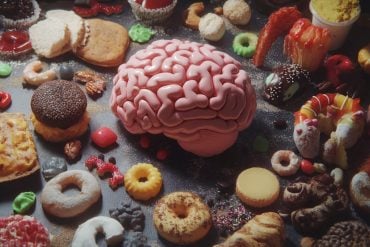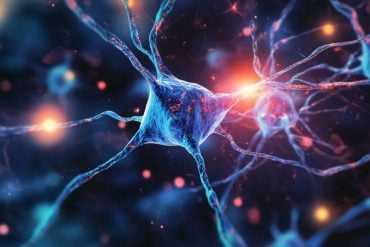Researchers at the University of Pittsburgh School of Medicine have shown that the core of the protein clumps found in the brains of people with Huntington’s disease have a distinctive structure, a finding that could shed light on the molecular mechanisms underlying the neurodegenerative disorder. The findings were published this week in the Proceedings of the National Academy of Sciences.
n Huntington’s and several other progressive brain diseases, certain proteins aggregate to form plaques or deposits in the brain, said senior investigator Patrick C.A. van der Wel, Ph.D., assistant professor of structural biology, Pitt School of Medicine.
“Despite decades of research, the nature of the protein deposition has been unclear, which makes it difficult to design drugs that affect the process,” he said. “Using advanced nuclear magnetic resonance spectroscopy, we were able to provide an unprecedented view of the internal structure of the protein clumps that form in the disease, which we hope will one day lead to new therapies.”
The gene associated with Huntington’s makes a protein that has a repetitive sequence called polyglutamine. In the 1990s, it was discovered that the patients have mutated proteins in which this sequence is too long, yet it has remained unclear how exactly this unusual mutation causes the protein to misbehave, clump together and cause the disease.
“This is exciting because it may suggest new ways to intervene with these disease-causing events,” Dr. van der Wel said. “For the first time, we were able to really look at the protein structure in the core of the deposits formed by the mutant protein that causes Huntington’s. This is an important breakthrough that provides crucial new insights into the process of how the protein undergoes misfolding and aggregation.

He added Huntington’s is one of many neurodegenerative diseases in which unusual protein deposition occurs in the brain, suggesting similar biochemical mechanisms may be involved. Lessons learned in this disease could help foster understanding of how these types of diseases develop, and what role the protein aggregates play.
The team included Cody L. Hoop, Ph.D., Hsiang-Kai Lin, Ph.D., Karunakar Kar, Ph.D., Jennifer C. Boatz, Abhishek Mandal, and Ronald Wetzel, Ph.D., all of the University of Pittsburgh; Gábor Magyarfalvi, Ph.D., of Eötvös University, Hungary; and Jonathan Lamley and Józef R. Lewandowski, Ph.D., of Warwick University, U.K.
Funding: The project was funded by National Institutes of Health grants GM112678, AG019322, GM099718 and GM088119; National Center for Research Resources grant RR024153; the Biotechnology and Biological Sciences Research Council; and the Engineering and Physical Sciences Research Council.
Source: Anita Srikameswaran – UPMC
Image Source: The image is credited to the researchers
Original Research: Abstract for “Huntingtin exon 1 fibrils feature an interdigitated {beta}-hairpin–based polyglutamine core” by Cody L. Hoop, Hsiang-Kai Lin, Karunakar Kar, Gábor Magyarfalvi, Jonathan M. Lamley, Jennifer C. Boatz, Abhishek Mandal, Józef R. Lewandowski, Ronald Wetzel, and Patrick C. A. van der Wel in PNAS. Published online February 1 2016 doi:10.1073/pnas.1521933113
Abstract
Huntingtin exon 1 fibrils feature an interdigitated {beta}-hairpin–based polyglutamine core
Polyglutamine expansion within the exon1 of huntingtin leads to protein misfolding, aggregation, and cytotoxicity in Huntington’s disease. This incurable neurodegenerative disease is the most prevalent member of a family of CAG repeat expansion disorders. Although mature exon1 fibrils are viable candidates for the toxic species, their molecular structure and how they form have remained poorly understood. Using advanced magic angle spinning solid-state NMR, we directly probe the structure of the rigid core that is at the heart of huntingtin exon1 fibrils and other polyglutamine aggregates, via measurements of long-range intramolecular and intermolecular contacts, backbone and side-chain torsion angles, relaxation measurements, and calculations of chemical shifts. These experiments reveal the presence of β-hairpin–containing β-sheets that are connected through interdigitating extended side chains. Despite dramatic differences in aggregation behavior, huntingtin exon1 fibrils and other polyglutamine-based aggregates contain identical β-strand–based cores. Prior structural models, derived from X-ray fiber diffraction and computational analyses, are shown to be inconsistent with the solid-state NMR results. Internally, the polyglutamine amyloid fibrils are coassembled from differently structured monomers, which we describe as a type of “intrinsic” polymorphism. A stochastic polyglutamine-specific aggregation mechanism is introduced to explain this phenomenon. We show that the aggregation of mutant huntingtin exon1 proceeds via an intramolecular collapse of the expanded polyglutamine domain and discuss the implications of this observation for our understanding of its misfolding and aggregation mechanisms.
“Huntingtin exon 1 fibrils feature an interdigitated {beta}-hairpin–based polyglutamine core” by Cody L. Hoop, Hsiang-Kai Lin, Karunakar Kar, Gábor Magyarfalvi, Jonathan M. Lamley, Jennifer C. Boatz, Abhishek Mandal, Józef R. Lewandowski, Ronald Wetzel, and Patrick C. A. van der Wel in PNAS. Published online February 1 2016 doi:10.1073/pnas.1521933113






